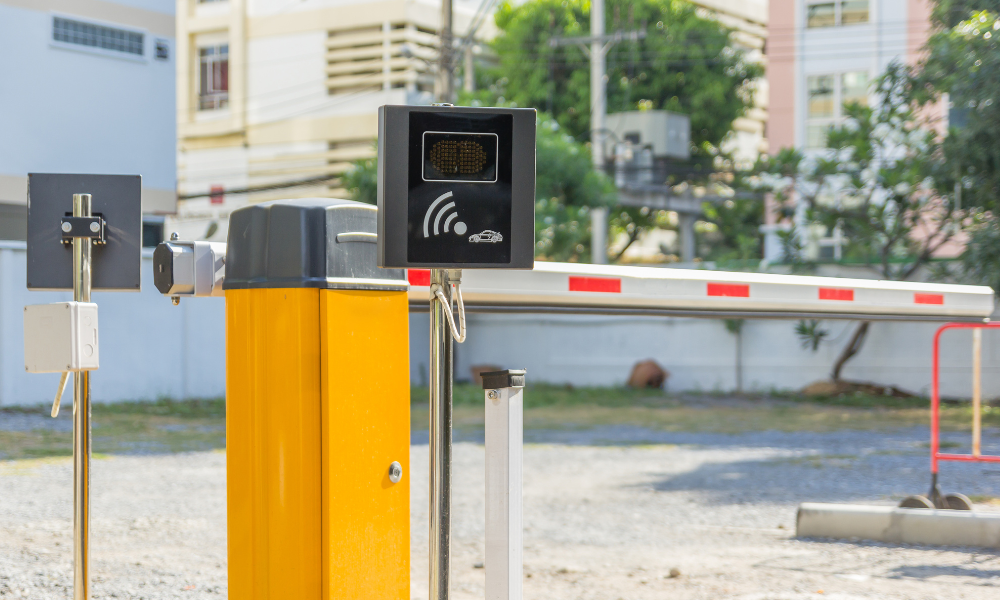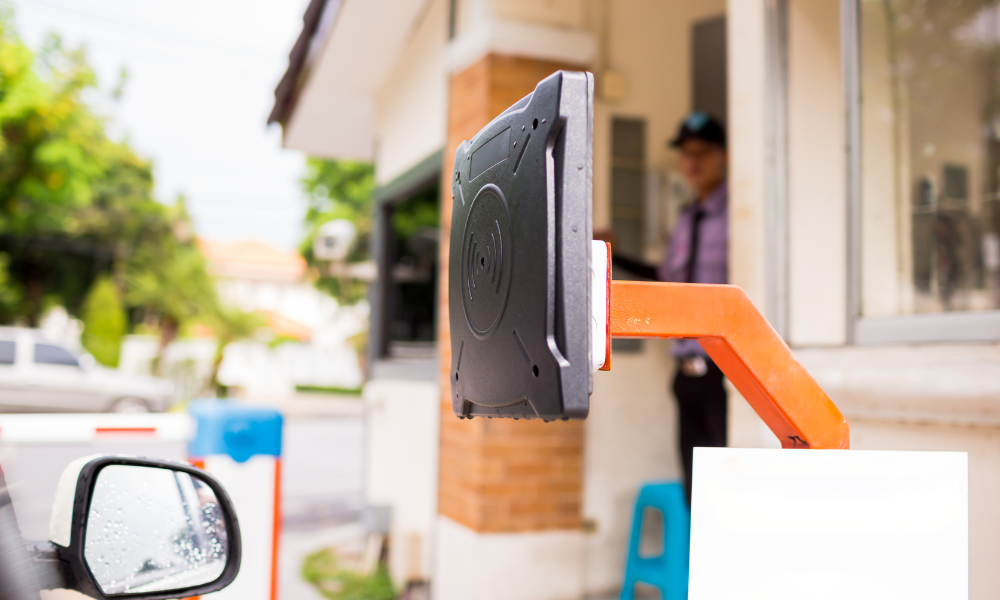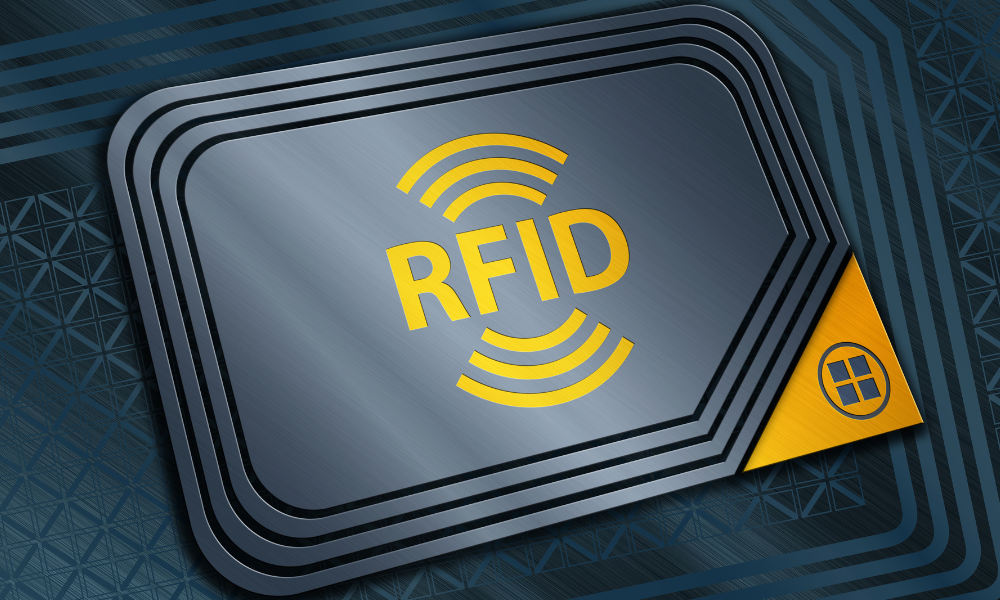In today’s fast-paced world, manufacturing centers are constantly seeking ways to streamline their operations and increase efficiency. One such way is by installing an automatic gate control system. However, not all gate control systems are created equal. The latest technology in gate control systems is the Radio Frequency Identification (RFID) based system.
This system offers a range of benefits that can help manufacturing centers optimize their operations, enhance security, and improve productivity. In this blog, we’ll explore what are the benefits of installing a RFID-based automatic gate control system in manufacturing centers and how it can help take your business to the next level.

What Is a RFID-Based Automatic Gate Control System?
An RFID-based Automatic Gate Control System is a technology-driven gate access control system that uses Radio Frequency Identification (RFID) technology to allow or restrict access to a specific area or facility.
It works by installing an RFID reader at the gate or entrance, which scans the RFID tag attached to the vehicle or person to identify whether they are authorized to enter the premises or not. The gate then automatically opens or remains closed based on the information received from the RFID reader.

Listed below are the key features of an RFID-based Automatic Gate Control System :
- RFID Reader: The system uses an RFID reader to scan the RFID tag and capture the information encoded in it.
- RFID Tags: The system uses RFID tags that are attached to the vehicle or person to allow access to the facility.
- Automatic Gate: The gate is automatically opened or closed based on the information received from the RFID reader.
- Real-Time Monitoring: The system provides real-time monitoring of the gate access, allowing the facility manager to keep track of who is entering or leaving the premises.
- Access Control: The system allows the facility manager to control access to the facility, ensuring that only authorized personnel are allowed in.
- Multiple Access Points: The system can be used to control access to multiple entry points of the facility, allowing the facility manager to manage access across different areas.
- Easy Installation: The system is easy to install, with minimal wiring required.
- Scalability: The system can be scaled up or down depending on the size of the facility, making it suitable for both small and large facilities.
- User-Friendly Interface: The system has a user-friendly interface, making it easy for facility managers to manage access control.
- Customizable Access Levels: The system allows facility managers to customize access levels for different personnel, ensuring that each person is granted access only to the areas they are authorized to access.
- Integration with other Systems: The system can be integrated with other security systems, such as CCTV, to provide a comprehensive security solution.
- Audit Trail: The system maintains an audit trail of all access events, allowing facility managers to track who has accessed the facility and when.
- Security Alerts: The system can be configured to send security alerts to facility managers in case of any unauthorized access attempts.
- Remote Access: The system can be accessed remotely, allowing facility managers to manage access control from anywhere.
- Low Maintenance: The system requires minimal maintenance, making it a cost-effective solution for managing access control.
RFID-Based Access Control: How Does It Work?
RFID-based access control is a security system that allows access to a building or area based on the use of radio frequency identification (RFID) technology. It uses an RFID reader and RFID tags, also known as RFID cards or badges, which are assigned to authorized individuals.

When an authorized individual presents their RFID card or badge to the RFID reader, the reader sends a signal to the access control system, which verifies the user’s identity and grants or denies access accordingly.
To explain how RFID-based access control works, here are the following steps to consider :
- An RFID tag, also known as an RFID card or badge, is assigned to an authorized individual.
- The RFID tag contains a microchip with a unique identification number and an antenna that receives radio waves.
- An RFID reader is installed at the entrance to the building or area that requires access control.
- When an authorized individual presents their RFID tag to the RFID reader, the reader sends a signal to the tag.
- The tag responds to the reader’s signal by transmitting its unique identification number.
- The reader receives the identification number and sends it to the access control system for verification.
- The access control system checks the identification number against its database of authorized users.
- If the identification number matches an authorized user in the database, the access control system grants access to the individual.
- If the identification number does not match an authorized user in the database, the access control system denies access to the individual.
- The access control system logs the time, date, and location of the access attempt for security purposes.
Overall, RFID-based access control provides a secure and convenient way to manage access to buildings and areas, reducing the risk of unauthorized access and increasing overall security.
Benefits of Installing RFID-Based Automatic Gate Control Systems
RFID (Radio Frequency Identification) based automatic gate control systems can provide significant benefits for manufacturing centers. Here are 15 potential benefits of installing this system:
- Increased Efficiency: The automatic gate control system can help streamline the entry and exit process of goods and people, reducing the time and effort required to manage entry and exit activities.
- Improved Security: The system can help prevent unauthorized access and monitor entry and exit activities, which can help improve overall security and reduce the risk of theft or damage to goods.
- Enhanced Safety: The system can help reduce accidents by controlling entry and exit activities and ensuring that only authorized personnel and vehicles are allowed on the premises.
- Real-Time Monitoring: The system can provide real-time monitoring of entry and exit activities, allowing managers to make informed decisions quickly.
- Inventory Management: The system can help improve inventory management by tracking the movement of goods in and out of the facility and providing accurate data on inventory levels.
- Data Collection: The system can collect valuable data on entry and exit activities, which can be used for analysis and decision-making purposes.
- Reduced Labor Costs: The system can help reduce labor costs by automating entry and exit activities and reducing the need for manual labor.
- Improved Traceability: The system can help improve traceability by providing accurate data on the movement of goods in and out of the facility, which can help with quality control and regulatory compliance.
- Improved Productivity: The system can help improve productivity by reducing the time and effort required to manage entry and exit activities and improving overall efficiency.
- Scalability: The system can be easily scaled up or down depending on the size and needs of the facility.
- Reduced Errors: The system can help reduce errors by automating entry and exit activities and providing accurate data on inventory levels and movement.
- Increased Accuracy: The system can help increase accuracy by providing real-time data on entry and exit activities and reducing the risk of human error.
- Cost Savings: The system can help reduce costs by improving efficiency, reducing labor costs, and minimizing errors.
- Regulatory Compliance: The system can help with regulatory compliance by providing accurate data on the movement of goods in and out of the facility.
- Improved Customer Satisfaction: The system can help improve customer satisfaction by improving the efficiency and accuracy of entry and exit activities, reducing wait times, and providing accurate information on inventory levels.
FAQs
-
What Are the Advantages of RFID in Manufacturing?
RFID technology in manufacturing provides real-time visibility of inventory, reduces errors, increases efficiency and productivity, and enables better supply chain management. Additionally, it can help with tracking and tracing products, enhancing quality control, and reducing costs.
-
What Is the Purpose of RIFD Gates?
RFID gates are used to track and monitor the movement of items, products, or people in various industries, such as retail, logistics, and security, by detecting the RFID tags attached to them. They enable quick and automated data collection, inventory management, and access control, leading to increased efficiency and accuracy.
-
What Are the Components of Automatic Railway Gate Control Systems?
The components of an automatic railway gate control system include sensors to detect the presence of a train, a microcontroller or PLC to process the sensor signals and control the gate mechanism, and an actuator to operate the gate.
-
What Is the Future Scope of Automatic Gate System?
The future scope of automatic gate systems is vast, as advancements in technology will continue to improve their efficiency, reliability, and security features. With the increasing demand for smart homes and automated solutions, automatic gate systems are expected to become more prevalent in residential, commercial, and industrial settings.
Conclusion
The installation of an RFID-based automatic gate control system in manufacturing centers can offer several benefits, including improved security, increased efficiency, enhanced productivity, and reduced operating costs. This system can automate the process of gate entry and exit, identify and track the movement of goods, and ensure the safety of employees.check out this blog for more reference how to implement quality control in manufacturing
For companies looking to implement this technology, QodeNext is a reliable partner that provides innovative and customized RFID solutions to suit the unique needs of various industries. Their expertise in this field can help manufacturers achieve seamless integration of the system and maximize its benefits. Contact QodeNext today to learn more about their RFID-based automatic gate control system solutions.


